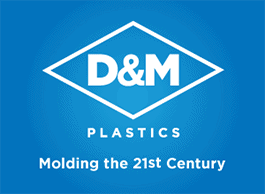DFM and Tool Design for Injection Molding
| Blogs | Comments Off on DFM and Tool Design for Injection MoldingDesign for manufacturability (DFM) is a critical aspect of product development, especially for injection molded plastic parts. By incorporating DFM principles into your design process, you can optimize costs, enhance quality, and accelerate time-to-market. This comprehensive guide will delve into the intricacies of DFM for injection molding, providing valuable insights and practical tips to help you achieve manufacturing success.
Understanding Design for Injection Molding (DFM)
DFM, in the context of injection molding, involves designing parts with manufacturability in mind. It’s a proactive approach that considers the entire product lifecycle, from initial concept to mass production. By optimizing your designs for the injection molding process, you can reap numerous benefits:
- Cost Efficiency: Minimize material waste, reduce cycle times, and streamline assembly processes, leading to significant cost reductions.
- Enhanced Quality: Improve the quality and repeatability of injection molded parts by reducing the likelihood of defects and errors during production.
- Faster Time-to-Market: Shorten the development cycle and accelerate time-to-market by avoiding design flaws or complexities that could cause manufacturing delays.
- Optimized Part Performance: Achieve desired performance characteristics such as strength, functionality, and tolerances without compromising manufacturability.
- Scalability: Facilitate scalability in production by designing parts that are easy to manufacture consistently, allowing you to meet changing market demands and accommodate business growth.
DFM Tooling: Key Design Considerations for Injection Molding
To achieve optimal results in injection molding, it’s crucial to consider specific design guidelines during the DFM tooling process:
- Uniform Wall Thickness: Maintain consistent wall thickness throughout the part to prevent inconsistencies in cooling and reduce the risk of warping or sink marks.
- Smooth Transitions and Fillets: Incorporate smooth transitions and generous fillets between features to improve material flow in the mold and prevent defects like sink marks or voids.
- Draft Angles: Add draft angles to vertical walls to facilitate easy ejection of parts from the mold, minimizing the risk of damage and ensuring smooth part release.
- Ribs and Gussets: Strategically place ribs and gussets to enhance part stiffness and structural integrity without adding excessive material or increasing cycle times.
- Avoid Undercuts: Minimize or eliminate undercuts to simplify mold design and ejection mechanisms, reducing complexity and cost.
- Mold Symmetry: Design mold cores and cavities with symmetrical features to achieve balanced filling and cooling, resulting in more consistent part quality.
- Gate Location and Design: Select appropriate gate locations and designs to control material flow and minimize gate-related defects.
- Venting: Ensure proper venting within the mold to evacuate air and gases during the injection process, preventing defects like burns or voids.
How to Design for Injection Molding: Best Practices
To master the art of DFM for injection molding, follow these best practices:
- Collaborate with Experts: Engage with injection molders who specialize in DFM principles to optimize your product designs.
- Utilize Simulation Tools: Employ mold flow simulation software to analyze and optimize material flow, cooling, and warpage behavior before production.
- Choose the Right Materials: Select materials that are compatible with the injection molding process and meet your performance requirements.
- Consider Tooling Costs: Factor in tooling costs during the design phase to avoid unexpected expenses later in the production process.
- Conduct Design Reviews: Regularly review your designs with the manufacturing team to identify and address potential manufacturability issues early on.
- 3D Printed Prototype Parts: When scaling up to production, it is important to consider undercuts (i.e. non-accessible features) and wall thicknesses being too thick or too thin. 3D printing allows for design flexibility.
By adhering to these design guidelines for injection molding and implementing best practices, you can ensure the successful and cost-effective production of high-quality plastic parts.
Partner with D&M Plastics for Expert DFM Solutions
D&M Plastics understands the critical role that DFM plays in the success of injection molded plastic parts. Our team of experienced engineers and designers are experts in DFM principles and can collaborate with you to optimize your product designs for cost-efficiency, quality, and speed-to-market. Whether you’re in the early stages of product development or looking to improve existing designs, D&M Plastics can help you achieve your manufacturing goals. Contact us today or request a quote to learn more about how our DFM expertise can benefit your next project.
Design for manufacturability (DFM) is a critical aspect of product development, especially for injection molded plastic parts. By incorporating DFM principles into your design process, you can optimize costs, enhance quality, and accelerate time-to-market. This comprehensive guide will delve into the intricacies of DFM for injection molding, providing valuable insights and practical tips to help […]
